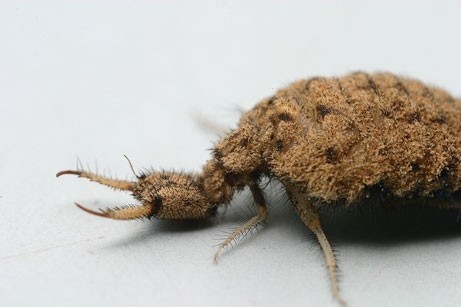How Physics Dooms Average Ants
Credit to Author: Michael Byrne| Date: Mon, 21 Aug 2017 14:13:00 +0000
It sounds like a particularly clever feature of hell. You are almost, but not quite, reaching distance from safety as the mandibles of death-larvae threaten from just behind. Almost out of harm’s way, you lunge forward—but the ground below your feet gives. Every other push forward only pushes the earth backward. Safety is no closer as the ground becomes a stairmaster under your feet. Soon, you’re sliding backward and downward. The hell-creature at the bottom has its meal.
Of course, a lot of nature winds up sounding like different perspectives on hell—take parasitic wasps for example—but ants really do seem to have it bad. There’s that zombie fungus, for one thing, but consider also antlion death-pits. Here, a quirk of friction leaves ants vulnerable to a truly unpleasant end at the hands of larval antlions. This is what a larval antlion looks like:

As it turns out, the mechanics of the above scenario are of interest to physicists. A recent paper by researchers at the University of Rennes describes an unexpectedly complex relationship between ant size and likelihood of being trapped in an antlion pit. They found that it’s only the most average ants that wind up trapped, with relatively small and relatively large ants being able to escape owing to the funny mechanics of friction at ant-scales.
It’s hard to ascribe cleverness to larval insects, but antlions are something else. Antlion larvae, sometimes known as doodlebugs, construct traps in the sand by dragging themselves around backwards in spirals, with the eventual result being a pit with steep walls. At the bottom, the doodlebug buries itself and waits. Except it’s not quite buried—protruding above the surface is a pair of pinchers. Ants of just the right size that wander into the pit wind up slipping down the walls to become antlion food.
To better understand this, the Rennes physicists constructed little hills of millimeter-sized glass beads. They then took cardboard-covered metal discs and dropped them down the hills, monitoring the discs’ and the beads’ motions and calculating the pressure and friction forces experienced by the discs as a function of their masses. They found that only intermediate-mass discs traveled down the hills, while lighter or heavier discs were likely to get stuck.
“Heavy objects generate footprint-like deformations which stabilize the objects on the slopes,” the paper explains. “Light objects do not disturb the sandy surfaces and are also stable. For intermediate weights, the deformations of the surface generate a sliding of the objects.”
“The existence of this instability diagram is expected to be relevant in many situations such as in robotic locomotion on sandy surfaces or in the formation of natural structures.”
What makes this interesting is that it’s quite different than what we should expect given the usual laws of friction—the Amontons-Coulomb laws, specifically—which make no exceptions for objects of varying masses. This is unique to sandy surfaces.
This potential updating of physical law will be slim consolation to unlucky average-sized ants. Their fate at the bottom of the pit is gnarly as hell. See, antlion larvae don’t actually have proper mouths. Instead, they secrete a chemical via their mandibles that liquifies their trapped prey alive. They then “drink” the pre-digested ant through a narrow slit. Brutal.
Get six of our favorite Motherboard stories every day by signing up for our newsletter.